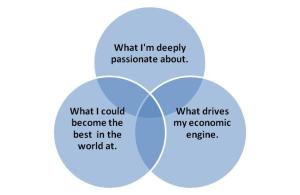The main reason for writing a Business Plan is not to obtain funding for your business.
Writing a Business Plan forces you to be more concrete and specific. Sure it is difficult and time-consuming. But as soon as you starting writing, you realize there are gaps in your knowledge of your target market, your competitors, your marketing strategies, and your financial projections.
Your Business Plan, will enable you to:
- Identify who your target market is. Can you describe them in detail? What are their hobbies and interests? What is their biggest worry in life? What do they read and watch? Why would they choose your product or service? Knowing your target market gives you clear insight into which of your business features and benefits they would love.
- Know who your competitors are. What are they good at and where are they weak? Can you provide quicker service, or give more for less money, or give better service for more money? As well, with so many businesses now online, you can’t say, “I don’t have any competitors in my town.” You will learn more about running a successful business from your competitors than anyone else.
- Describe what marketing strategies you will use. If you are like most small business startups, you don’t have a lot of funds to allocate to marketing. Social media sites (Twitter, Facebook, LinkedIn) are an inexpensive way of getting the word out about your product. Why not offer your product or service as a prize on one of the popular blogs read by your target market. Make sure you look around your local area for business networking groups – they provide a wealth of contacts, information, and support for new businesses.
- Chart out your revenue and expenses projections for Years 1, 3, and 5. As you set monetary goals for your business, put some stretch in so that you are motivated to achieve but not so unrealistic that you soon become discouraged. One of the first things you will discover is that you are not charging enough for your product/service. You will also discover that in order to reach your monetary goals between years 3 and 5, you will need to change, delete, or add to some of your business practices.
Creating a Business Plan is like eating an elephant – easy if you do it one bite at a time. Start today by identifying who your target market is. Then move on to the other three until you have a clear Success Plan for your business.
Bev McCrostie, M.Ed.
Your Unlimited Potential
Coaching Small Business Startups


